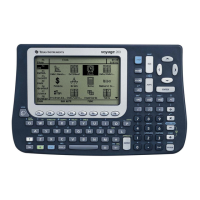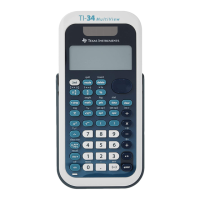3D Graphing 390
As the z axis rotates 90¡, its range (L10 to 10 in this example) expands to almost twice its
original length. Likewise, the x and y axes expand or contract.
From the Home Screen or a Program
From the Home Screen or a ProgramFrom the Home Screen or a Program
From the Home Screen or a Program
The
eye values are stored in the system variables eyeq, eyef, and eyeψ. You can access
or store to these variables as necessary.
Animating a 3D Graph Interactively
Animating a 3D Graph InteractivelyAnimating a 3D Graph Interactively
Animating a 3D Graph Interactively
After plotting any 3D graph, you can change the viewing angle interactively by using the
cursor.
The Viewing Orbit
The Viewing OrbitThe Viewing Orbit
The Viewing Orbit
When using A and B to animate a graph, think of it as moving the viewing angle along
its “viewing orbit” around the graph.
H To type f or ψ, press 2
GF or 2 GY respectively. You can
also press 2G and use the Greek menu.
Moving along this orbit can
cause the z axis to wobble
slightly during the animation.

